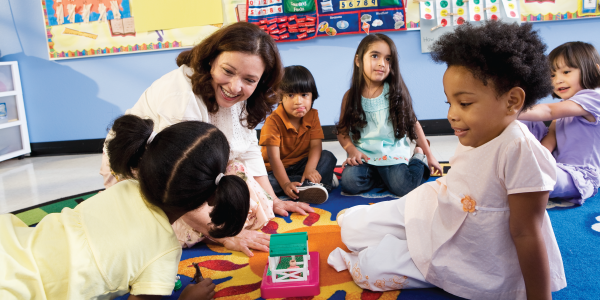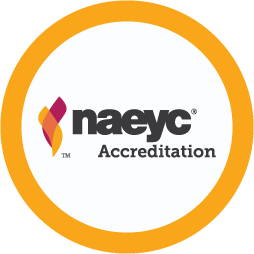6X. Six Ways Educators Can Honor Home Languages

You are here
While English is the common language for many children and educators in the United States, it’s important to honor children’s and families’ home languages. These are a big part of their emotional connections to their home cultures. The research shows that children who maintain the ability to use the language of their families form stronger bonds with their cultural heritages. Educators who support and represent children’s home languages contribute to that connection, acknowledge children’s life experiences in the outside world, and ultimately create a caring, equitable community of learners where everyone has a place.
As a consultant and trainer, I’ve seen creative ways that teachers have found to teach multilingual learners. But I’ve also seen anxiety—especially if the educators are monolingual English speakers.
It isn’t always possible to have staff who are fluent in all of the languages spoken in an early learning setting. Yet there are other ways you can recognize children’s home languages and support families to maintain them at home. Here, I offer some practical tips to honor the diverse languages children speak in settings where English is the shared language.
1. Engage families
Families and educators need each other’s help to promote both English and home languages. You can engage families in your curriculum by sharing themes and activities, then asking them to talk about the same ideas at home. For example, if you’re studying birds, ask families to talk about birds at home, in their home languages. Let them know that these conversations will help their children become bilingual as they learn concepts in two languages. You can also help families feel welcome by inviting them to visit your program to play with children, read or tell stories, or do a cooking project. This helps families become familiar with your program while showing them that you value their cultures and languages. If coming in isn’t feasible, families can contribute in other ways. For example, they can send you topic-related words, such as pájaro for bird or alas for wings, that you can add to your word wall. (Be sure to integrate all of the languages in your setting, including languages that use different symbols to represent sounds or words from those used in English.) Children can also bring culturally relevant items from home to share. Families can include a story about the item for you to read aloud.
2. Plan multilingual greetings
Learn how to say hello (along with other key words and phrases) in the languages your children speak, so you can greet them each morning in their home languages. This will set a welcoming tone and help build relationships. When children hear their home languages spoken during the day, they realize their language is important and appreciated by others too.
3. Highlight individual languages
You can incorporate multiple home languages into your setting during different parts of the day. One approach I have seen is teachers choosing a different language to highlight each day (English on Monday, Spanish on Tuesday, Somali on Wednesday, and so on). Circle time or morning meeting is a great time to introduce the language: “Today is Spanish day. In our classroom, Sarita, Pablo, and Kevin speak Spanish at home, and we can all say hello and sing together in Spanish too.” By creating a regular schedule, children will begin to anticipate the language of the day and learn to appreciate the different languages and cultures represented in your setting.
4. Incorporate songs into lessons
Songs are a way for children to learn how different languages sound and to understand that languages have different words for the same ideas or objects. For each home language, choose a few songs to connect to a lesson or activity. For example, you may sing “The Wheels on the Bus” in English, then learn “Las Ruedas del Bus” in Spanish or “Les Roues de l’Autobus” in French. Same tune, different words. Ask children and their families for ideas about songs to use. When introducing them to the class, be explicit about which language you’re speaking. You might listen to a recording of the song to learn the words and melody. Then sing together, so everyone can try those words. The objective is not merely to listen for entertainment but to experience speaking different languages.
5. Offer books in home languages
Research has shown that reading books in multiple languages helps build literacy skills, social and emotional learning, and family connections. If you aren’t fluent in a language, you’ll need the assistance of a family or community member to read the book—either live or recorded. (See “In Our Voices: Creating Community Responsive Listening Centers” in the Summer 2022 issue of Teaching Young Children for more on this.) You can also tap your local library or YouTube for audio/video recordings. Pick the same book as the one you’re reading aloud or a text that’s related to your main topic of study. This allows children to use the same vocabulary they’re learning in English, which reinforces their learning of words and concepts in both languages. Be explicit when introducing a book in a child’s home language: “We’ve been reading The Very Hungry Caterpillar in English. But today I want you to listen to The Very Hungry Caterpillar in French. It’s the same story, but the words are in French and will sound different. Angèle and Yana speak French at home, and they will understand the words. Let’s all listen carefully now.”
6. Affirm children’s use of home languages during play
An early childhood setting has many opportunities for spontaneous interactions across the day. Small groups of children who speak the same language may begin to use that language among themselves. You can acknowledge and encourage these peer interactions. You can also look for natural breaks in their conversations to recognize them: “You are using your Spanish. It’s wonderful! You can speak English and Spanish too! You are bilingual.” This respects and elevates children’s linguistic skills and lets them know they have important knowledge.
 An effective multilingual early learning program is a vibrant community of people sharing life, language, and learning. By intentionally planning support for all the home languages in your setting, you recognize children’s cultures and show that you value them and their families.
An effective multilingual early learning program is a vibrant community of people sharing life, language, and learning. By intentionally planning support for all the home languages in your setting, you recognize children’s cultures and show that you value them and their families.
Photograph: © Getty Images
Copyright © 2024 by the National Association for the Education of Young Children. See permissions and reprints online at NAEYC.org/resources/permissions.
 This article supports the following NAEYC Early Learning Programs standards and topics
This article supports the following NAEYC Early Learning Programs standards and topics
Standard 2: Curriculum
2A: Essential Characteristics
2J: Creative Expression and
Appreciation for the Arts
Standard 7: Families
7A: Knowing and
Understanding the
Program’s Families
Angèle Sancho Passe is an early education consultant, trainer, and writer based in Minneapolis, Minnesota, and a past member of the NAEYC Governing Board. She is the author of Dual Language Learners, which includes additional information on how families can help their children become bilingual.